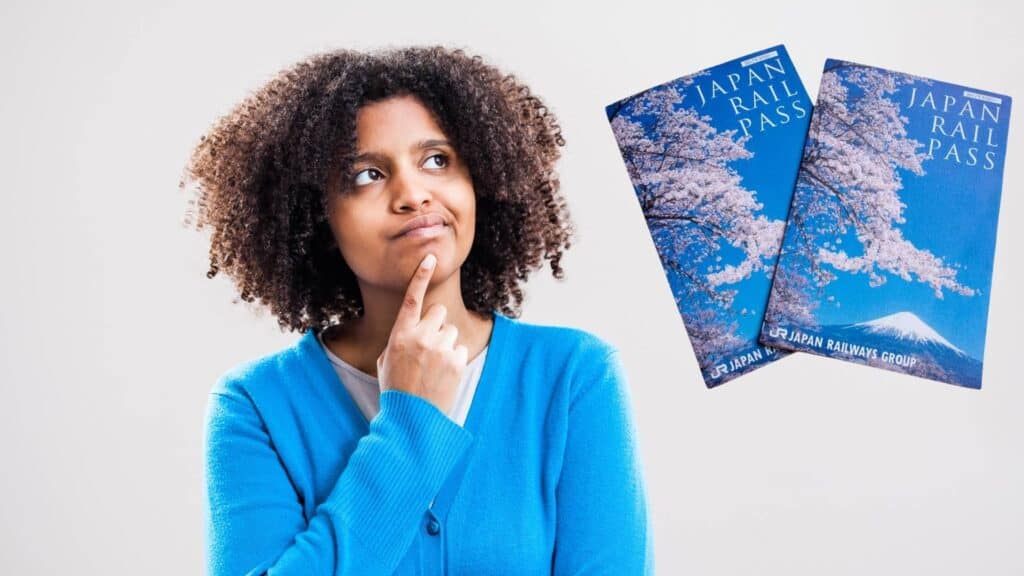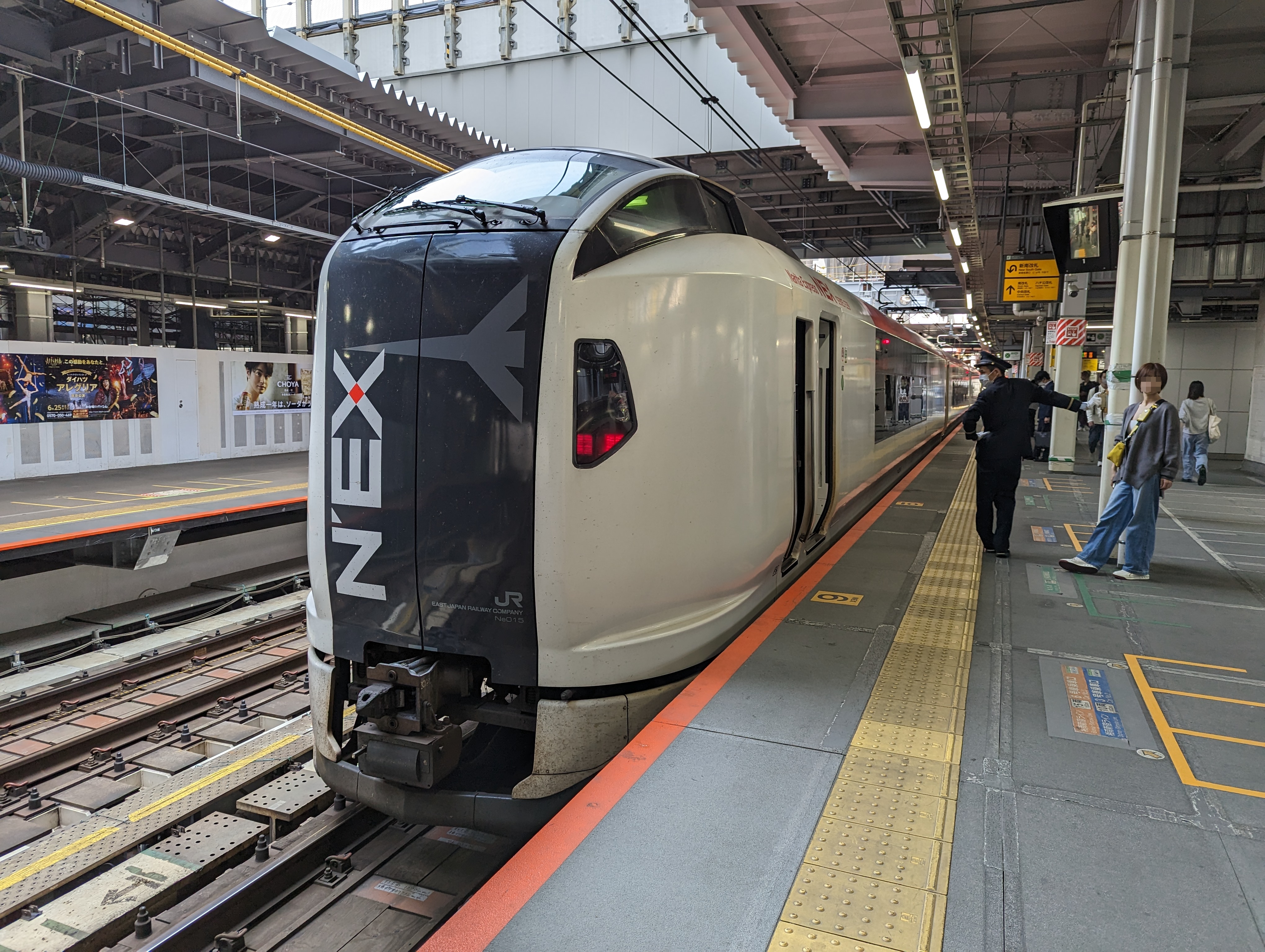If you’re planning a trip to Japan—or even just looking into it—you’ve probably read about the Japan Rail Pass (JR Pass). But what exactly is the Japan Rail Pass,?
“Is Japan Rail Pass worth it?” is a common question asked by travellers given the cost and the various travel options in Japan. To save you time and potential confusion, let’s explore the details.
But before we get into the nitty-gritty of things, know that you can get the Japan Rail Pass without all the hassle and at no extra cost as part of your FLIP Japan Travel Starter Pack. The pack not only has all the essential things you need for a trip to Japan, but a bunch of awesome bonuses as well, including a Tokyo Coupon collection offering discounts to hundreds of places we highly recommend!
What is the JR Pass?

Understanding the JR Pass is essential for travellers planning their Japan adventures. This pass provides convenient unlimited travel on Japan Railways (JR) trains, including regular services and the renowned Shinkansen bullet trains.
The flexibility of the JR Pass is one of its most appealing aspects, with options available for 7-day, 14-day, or 21-day passes, catering to varying lengths of stay and travel itineraries.
Additionally, travellers have the choice between standard or green class cabins, allowing them to tailor their experience based on comfort preferences.
JR Pass Pricing
| Type | Duration | Adults (¥) | Children (¥) |
|---|---|---|---|
| Green | 7-day | 70,000 | 35,000 |
| Green | 14-day | 110,000 | 55,000 |
| Green | 21-day | 140,000 | 70,000 |
| Ordinary | 7-day | 50,000 | 25,000 |
| Ordinary | 14-day | 80,000 | 40,000 |
| Ordinary | 21-day | 100,000 | 50,000 |
The Japan Rail Pass for 2024 comes in two categories: Green and Ordinary.
Prices for the Green Class are set at ¥70,000, ¥110,000, and ¥140,000 for the 7-day, 14-day, and 21-day passes respectively. Corresponding prices for children are half of the adult rates.
The Ordinary Class offers 7-day, 14-day, and 21-day passes at ¥50,000, ¥80,000, and ¥100,000 respectively, with children’s prices again being half that of adults.
Please note that prices are subject to change, and you can get the most updated pricing on the official Japan Rail Pass website. The pass is non-exchangeable and non-refundable except under specific conditions before the start date. If lost or stolen, the pass cannot be reissued.
Who Can Use the JR Pass?

To be eligible for the Japan Rail Pass, you must meet one of two criteria:
- Foreign Tourists: You must be a tourist from outside Japan, entering the country with a “temporary visitor” visa specifically for sightseeing purposes. Your passport should have the “temporary visitor” stamp.
- Japanese Nationals Living Abroad: Japanese citizens residing overseas may also be eligible if they meet certain criteria specified by the issuing authority.
It’s essential to note that the JR Pass is strictly personal and non-transferable. You must always carry your passport while using the pass, as it may be required to verify your eligibility and pass ownership during your travels in Japan.
Where Can the JR Pass be Used?

The JR pass grants access to an extensive network of trains and lines, providing travellers with convenient transportation options across Japan. Here’s where you can use the JR pass:
- Almost all JR trains: This includes Limited Express, Express, Rapid, and Local services, allowing travellers to explore both popular tourist destinations and off-the-beaten-path locales with ease.
- The iconic Bullet Trains (Shinkansen): Renowned for their high-speed travel, Shinkansen trains connect major cities like Tokyo, Osaka, Kyoto, and Hiroshima, enabling rapid transit between distant locations. With the JR pass, you can experience the thrill of zipping across Japan at speeds of up to 320 km/h, reducing travel time and maximising sightseeing opportunities.
- Tokyo Monorail: Ideal for travellers arriving or departing from Haneda Airport, the Tokyo Monorail provides a convenient link between the airport and the city centre. Offering a smooth and swift journey, this monorail service ensures seamless transitions for travellers, whether they’re beginning their Japan adventure or bidding farewell to the country.
- JR ferry service to Miyajima: Accessible via ferry from Hiroshima, Miyajima Island is famed for its iconic floating torii gate and scenic beauty.
- Some local JR buses: While JR trains form the backbone of Japan’s rail network, local JR buses provide additional flexibility for reaching destinations beyond the train stations. These buses serve as vital connections to rural areas, mountainous regions, and tourist attractions not directly accessible by train.
- Select non-JR trains: In certain regions, the JR pass can be used on specific non-JR trains, albeit only to stations with JR line connections. For example:
- The Aomori Railway between Aomori, Noheji, and Hachinohe stations provides access to the JR Ominato line, extending travel options in the northern Tohoku region.
- The IR Ishikawa Railway between Kanazawa and Tsubata connects to the JR Nanao line, making it easy to explore the scenic Noto Peninsula.
- The Ainokaze Toyama Railway between Toyama and Takaoka links to the JR Himi and JR Johana lines, offering convenient access to coastal towns and rural areas.
Using the JR pass is straightforward – simply tap it on the automatic ticket gate and proceed through. In case of any issues, present your Japan Rail Pass to an attendant at the station for assistance.
It’s important to note that JR Pass-valid routes may vary under certain circumstances, such as weather conditions or other factors. So, it’s advisable to check route availability and conditions before planning your journey.
Seat Reservations with JR Pass

Another thing to know when considering whether the JR Pass is worth it is that for a comfier journey, you can reserve a seat with your pass. This is a good idea, especially during busy travel times when trains tend to get crowded. Otherwise, you’re welcome to grab any available non-reserved seat.
Seat reservations aren’t offered on all trains, particularly those operating within cities, but they’re a must on others, like the Narita Express between Tokyo and Narita Airport. While seat reservations are complimentary, certain sections, such as private compartments and sleeping cabins, may incur additional charges.
Missing your train with a reservation can be a hassle for both fellow passengers and the train company, so it’s wise to cancel your reservation if your plans change. Afterward, you can either make a new reservation or opt for a seat in the non-reserved section.
How to Make Seat Reservations

To reserve seats using your Japan Rail Pass, visit any JR ticket office once you are in Japan. You can also use ticket machines available at stations. Simply present your pass and passport, specify your desired train and seat preferences, and the staff will assist you with the reservation.
Remember, seat reservations are free with the JR Pass, but it’s advisable to book in advance during busy travel periods to ensure availability. For specific trains and detailed procedures, you can check the official JR Pass website.
So, is the Japan Rail Pass worth it?

Now that you’re acquainted with the basic information about the pass, the question remains: is the JR Pass worth it?
Yes, BUT primarily if you intend to travel between major cities and regions. Currently, a standard ticket for the bullet train from Tokyo to Osaka costs approximately ¥15,000 (USD$110) for a one-way journey. If you’re planning extensive travel across Japan, the JR Pass can offer substantial savings.
However, if your travel is confined to one city, such as exclusively using JR trains within Tokyo, the pass may not be as cost-effective. A short half-hour ride on Tokyo’s JR Yamanote line typically costs around ¥200 (approximately $1.50). Opting for a 7-day ordinary JR Pass priced at around ¥50,000 ($370) for such local rides in Tokyo could exceed your needs.
Ultimately, the value of the JR Pass hinges on your specific travel plans in Japan.
Make your Japan Trip Planning Less Stressful with Flip Japan Guide!
Planning a trip can be quite the ordeal, right? But don’t worry, Flip Japan Guide is here to lend a hand! If you have any queries about the JR Pass or need advice on your Japan journey in general, feel free to get in touch. We’re dedicated to making your trip as smooth as possible.
And if you’re unsure whether the JR Pass is the right choice for you, we’ve got you covered. We’ll chat with you, address all your concerns, and even assist you in organizing your itinerary. Because let’s be real, Japan is too incredible to stress over. So take a breath, reach out to us, and let’s make your trip stress-free!


Recent Comments